The first step of the writing process is brainstorming. And although it may seem simple to us, many students struggle with this necessary part of writing!
Brainstorming is a powerful tool that can turn your classroom into a hub of imaginative thinking and collaborative learning. It is also the step that builds a solid foundation for students to write. But how can we get our students excited about brainstorming? Today we are going to cover 5 important things to think about when teaching brainstorming to your students!

The Magic of Brainstorming
I think it’s important for us to help our students understand the magic behind brainstorming. Think of it as a grand idea party where every thought is welcome. As teachers, you play the role of guides, leading your students through a landscape of creativity, where big and wild ideas take center stage. It’s best to model brainstorming first! Include your students so they can get a feel for what it looks and sounds like.
What does this look like in the classroom?
To warm up those creative muscles, try a Word Storm activity with your students. Pick a topic most students are familiar with – the more excited students are about the topic, the better!
Ask each student to shout out a single word that comes to their mind when they think about a particular topic. Write these words on the board in a chaotic, scattered manner.
Let them know at this stage nothing wrong about what they shout out. Brainstorming is about getting all your ideas out and on paper!
The No “No” Zone
In the brainstorming world, there’s no room for negativity. Encourage your students to embrace every idea, no matter how whimsical it may seem. This is a judgment-free zone where even the silliest concepts can spark innovative thinking.
What does this look like in the classroom?
Guide your students through a more focused brainstorming session. Choose a specific writing prompt or topic relevant to your curriculum. Encourage them to think big and wild, reminding them that there are no wrong answers during this creative exploration.
This brainstorming activity will help them build their confidence with their own brainstorming skills. Giving positive reinforcement and feedback will help them feel empowered to share anything and everything they know about a topic!
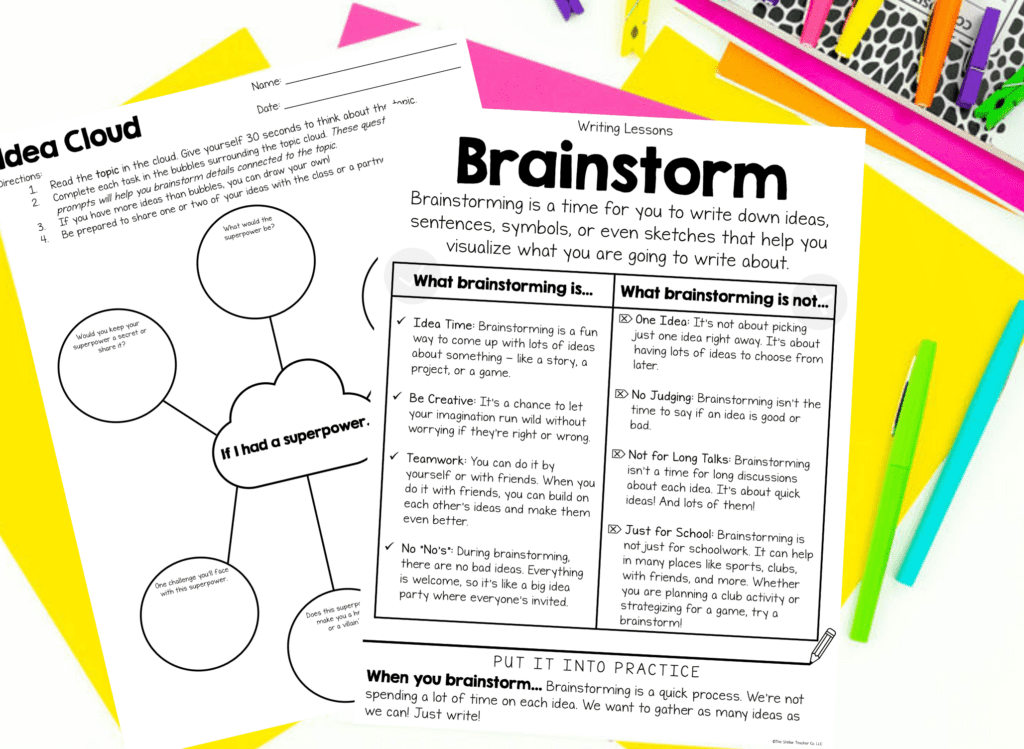
Collaboration is Key
Introduce the idea of brainstorming as a collaborative activity! Encourage discussion, collaboration, and the evolution of thoughts to help them gain a better understanding of how brainstorming works.
What does this look like in the classroom?
Facilitate a discussion where students share their ideas with the class. Encourage them to build on each other’s thoughts. For example, you can have one student share a thought or idea and then ask a partner to expand on it!
Remember, brainstorming is a muscle we need to build! Partnering students helps them understand ideas have the potential to evolve and improve.
Working toward a common goal – thinking of ideas on a topic – can enhance motivation too! We want students to brainstorm as many ideas as they can, so having a partner to help is a great way to achieve this.
Keep It Quick
Efficiency is the ultimate goal in the world of brainstorming. Emphasize the importance of quick thinking and rapid idea generation. This process is about quantity – the more ideas, the better. They can always refine and select the strongest ideas later.
Brainstorming probably won’t be quick right away for most students – be patient! The more students practice brainstorming, the faster – and more efficient – they will become!
What does this look like in the classroom?
Set a timer! Use fun, fast paced music to set the scene and go! You can start with longer amounts of time like 3-5 minutes and eventually move to 1-2 minutes! Mix it up and give students multiple opportunities to brainstorm in a restricted amount of time.
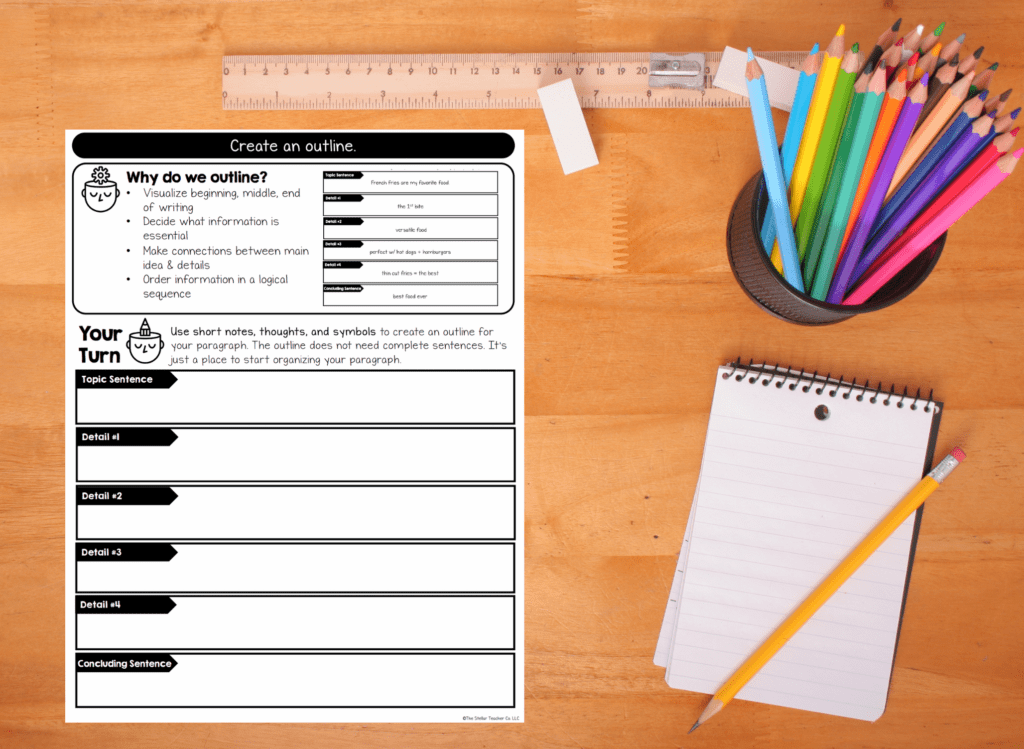
Use Colors and Draw Pictures
I think it is often a misconception that brainstorming equals words and phrases. But brainstorming can be a fun and visual process too!
Engage the visual senses of your students by incorporating colors and drawings into their brainstorming process. Sometimes, a simple sketch or splash of color can breathe life into an idea, making the creative journey even more vibrant.
What does this look like in the classroom?
Give students a challenge: only use quick sketches and symbols for a brainstorm! Of course, we don’t want students to only use pictures for all their brainstorms, but this is a fun way to get students to think about using visuals during this process.
Have students put words/phrases to the pictures as a second step!
By turning brainstorming into an interactive, collaborative, and enjoyable experience, you empower your students to unlock the magic of creativity in this step of the writing process.
Think about your next steps…
- Download your FREEBIE! The Paragraph Writing Routine breaks down the 6-steps of the writing process into bite-sized activities. This resource includes a great brainstorming activity that will help your students get familiar with the process.
- Check out our FREE private podcast that will teach you how to effectively teach writing in 3rd – 5th grade! The Confident Writer System series is bite-sized PD that you can listen to as you drive to work or go for a walk!
- Join us inside The Stellar Literacy Collective, where you will get access to a resource library filled with reading and writing resources that will help support you and your students get the most out of your literacy block.



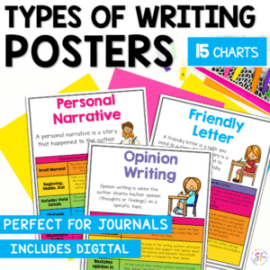
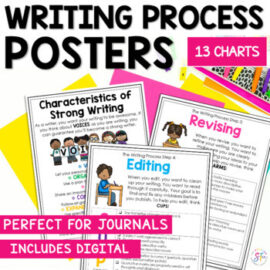
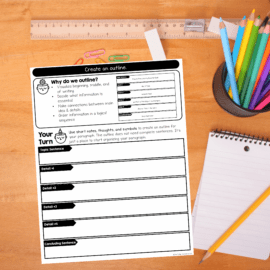
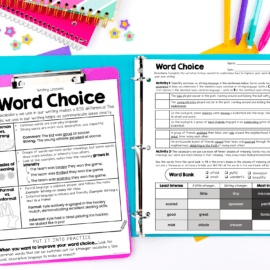










Leave a Comment
You must be logged in to post a comment.